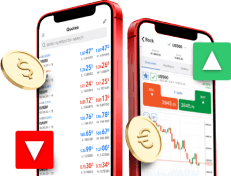The economic crisis, the collapse of demand, the breakdown of OPEC+ are all factors that could have caused huge fluctuations in oil prices in the first half of the year. Now everything is slowly returning to normal, but the oil price is beginning to be affected by the news of storms in the Gulf of Mexico and the reduction in oil stockpiles.
The general calming of the oil market may be indicated by the value of the equivalent VIX index for oil. The OVX index (CBOE Crude Oil Volatility Index) fell in August to 31 points. Its highest value came in April and was over 300 points. For comparison, since the beginning of the year, OVX ranged from 27 to 33 points. This way it could be estimated that at this point in time the volatility on the oil market has returned to normal.
Oil extraction companies in the Gulf of Mexico had to reduce their operations even more strongly. At the beginning of the week, oil production in this area fell by slightly more than 50 percent. Now, it is over 80 percent, all due to the approaching hurricane Laura and the tropical storm Marco. Moreover, API data showed that oil reserves in the USA fell last week more significantly than expected. This may indicate a recovering demand for oil in the USA despite another wave of COVID-19 infection.
This and the following weeks, oil stocks may start to fall due to the lack of new supplies from the Gulf of Mexico, which in turn may not only affect the price of the crude but may also push upward inflation in the USA. Earlier this week, according to the EIA, the average price of US petrol rose by over 10 cents per gallon per week. As a result, it was the biggest weekly increase in the price of petrol in the US since the beginning of September 2017. At the same time, due to Hurricane Harvey, the price rose by as much as 28 cents.
WTI's oil prices closed the bearish gap from March and may thus have an open path even towards the price of USD 49 per barrel. Now, much seems to depend on factors that are mostly beyond human control, i.e. the power of hurricanes and the progressing epidemic.
Daniel Kostecki, Chief Analyst Conotoxia Ltd.
Materials, analysis and opinions contained, referenced or provided herein are intended solely for informational and educational purposes. Personal opinion of the author does not represent and should not be constructed as a statement or an investment advice made by Conotoxia Ltd. All indiscriminate reliance on illustrative or informational materials may lead to losses. Past performance is not a reliable indicator of future results.
79% of retail investor accounts lose money when trading CFDs with this provider. You should consider whether you understand how CFDs work and whether you can afford to take the high risk of losing your money.


